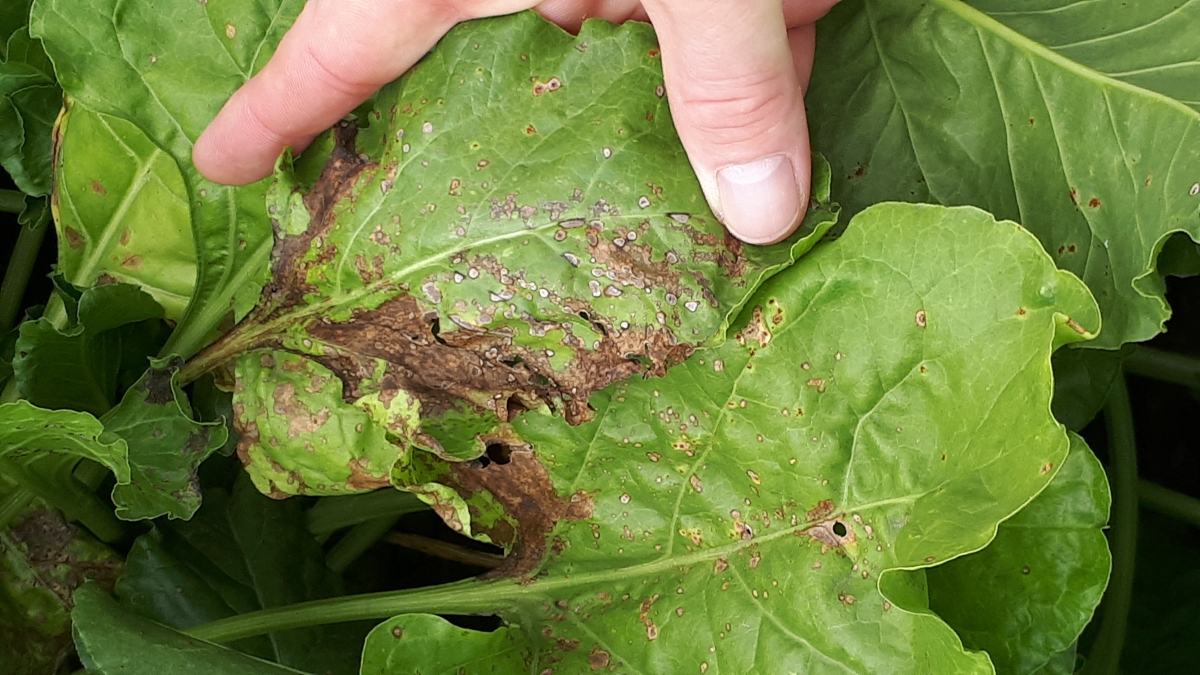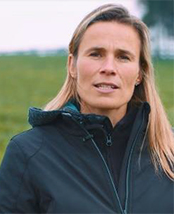Published on 21 May 2021
Seed breeders are always on the lookout for new disease resistant cultivars to help farmers grow healthy and productive crops in a sustainable manner.
In the case of sugar beet, for example, they are looking for varieties resistant to powdery mildew, a leaf disease dominant in Belgium caused by a fungus.
Phenotyping (the observation of all the apparent characters due to the expression of genetic factors depending on the environment) of cultures in breeding trials is therefore crucial and must be able to be done on a large scale with precision and high reliability.
Field methods
The traditional method requires that the fields be reviewed by an expert specifically trained for this task. They make careful observations using a visual scoring system to identify and quantify the presence of the disease. This type of assessment can take several days for the same field and observations should be repeated throughout the growing season. This assessment is also prone to human interpretation, and can be influenced by weather conditions.

Field measurements using portable fluorimetry and spectroscopy instruments are a first step towards more objective and efficient phenotyping. The fluorimeter provides measurements of chlorophyll fluorescence that can detect factors that affect photosynthetic activity. These measurements can reveal the presence of powdery mildew before any symptoms visible to the naked eye appear. The spectrometer records in specific visible and near infrared wavelength intervals to reveal stress on the plant.
Although having many advantages over the traditional method, these ground measurements still take a long time and their efficiency remains low. They also depend on the conditions of access to the land. These measurements can be performed with better precision in greenhouses where conditions are controlled, using these portable instruments or hyperspectral imaging cameras mounted on ground platforms.

Orthophoto of the Riemst study site and NDVI median values of the test plots calculated throughout the season (from left to right: 8/09/2020 - 9/10/2020 - 16/10/2020)
Measurements by drones
In order to further improve phenotyping, the team of the STEREO III project BEETPHEN decided to take to the sky and evaluate the potential of drones for the quantitative assessment of leaf diseases in experimental plots.
The use of aerial images was ruled out from the outset because it would not have been compatible with the small dimensions of the breeding test plots (around 10 m²) and the need for frequent revisits. Drones, on the other hand, are able to provide assessments at very high spatial resolution and very flexible temporal resolution. Along with the multispectral approach, high resolution hyperspectral remote sensing imagery has been found to be more suitable for producing spectral indices related to crop health. These indices therefore provide information on a potential stress undergone by the plant. Compared with the traditional method or field measurements, the image captures are much faster (only one hour instead of three days) and the measurements more precise and homogeneous.
A processing chain for objective visualization
The images acquired are uploaded to the MAPEO online platform, which constitutes an end-to-end solution to process, visualise and analyse drone data for various applications, including phenotyping. A dedicated, machine learning based algorithm is added to the processing chain for the powdery mildew detection.
MAPEO's objective, clear and detailed visualization provides more information than can be seen with the naked eye, ensuring better informed decisions. The private partner of the project, the company SESVanderHave, can thus accurately and efficiently monitor the mildew resistance of different sugar
beet varieties, optimizing effort and cost, and speeding up its cultivation and selection programmes.
Thanks to the expertise and synergy of the research partners, the BeetPhen project provides substantial support for the creation and production of resistant and productive sugar beet varieties.
|
The 'application development' projects ensure the transfer of technology and knowledge from scientific institutions to businesses, administrations and NGOs. In the case of BEETPHEN, the non-research partner is the private company SESVanderHave (not funded by the programme) and the scientific team is made up of researchers from the Walloon Center for Agronomic Research (CRA-W) and VITO-Remote Sensing. |
More information
STEREO project BEETPHEN (Sugar beet phenotyping in breeding trials using UAV)
MAPEO Phenotyping - Automated image processing for drone-based phenotyping


